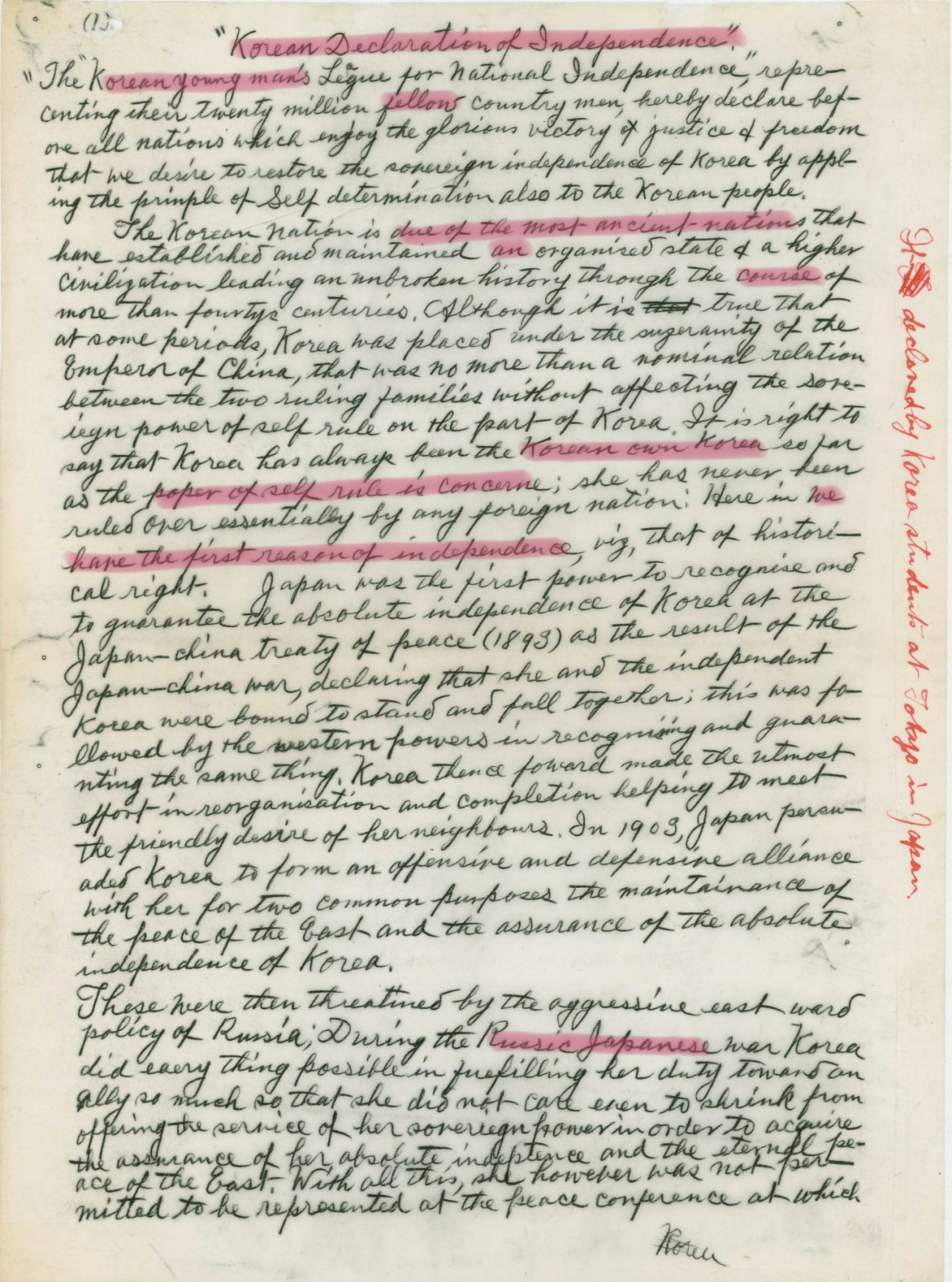 |
Feb. 8 Korean Declaration of Independence handwritten in English, in 1919 (Independence Hall of Korea) |
A handwritten English version of the Feb. 8 Declaration of Independence, which triggered subsequent independence movements in Korea and abroad, has been discovered after 104 years, the Independence Hall of Korea said Thursday.
The handwritten copy was found during an analysis of research materials which were borrowed from the Korean National Association Memorial Foundation in Los Angeles in 2019, the state run institution said.
The Feb. 8 Independence Declaration was issued by some 600 Korean students studying in Japan, who read the independence declaration at the Korean Young Men’s Christian Association auditorium in Tokyo, on Feb. 8, 1919, pledging to fight against Japan’s colonization of Korea. Japan formally annexed Korea in 1910.
The proclamation of the Feb. 8 Independence Declaration ignited the March 1 Independence Movement in Korea less than a month later. It was also instrumental in the establishment of the Provisional Government of the Republic of Korea in Shanghai, China, in April.
The title of the six-page letter in cursive writing reads, "Korean Declaration of Independence," and describes Japan's forced annexation of Korea as “a great blot on the history of the human race." The declaration goes on to state the activists' firm determination to fight for Korea's independence.
Although the writer has not been identified, researchers think it may have been written by Korean independence activist Yi Gwang-su (1892-1950), then a college student studying in Tokyo's Waseda University, in late January 1919. After his imprisonment in 1937, Yi became a pro-Japanese collaborator.
The declaration was initially written in Korean and translated into English and Japanese to be distributed to the press and foreign embassies including embassies of US, Russia and Manchuria in Tokyo on the morning of Feb. 8.
A Japanese Foreign Ministry report from 1921 notes that the English version of the declaration in Japan at the time was typed, which means that the original handwritten copy had been sent to the US, according to the Independence Hall of Korea.
"By comparing grammatical errors and typos in the three versions -- the handwritten, typewritten and newspaper print -- it is reasonable to assume that the three had been made in a sequential manner as the print version is the most refined," Jin Ju-wan, researcher at the Independence Hall of Korea told The Korea Herald Thursday.
When asked how the handwritten English copy landed in the US, the researcher said that it is highly likely that Yi had sent it to Ahn Chang-ho (1878-1938), who, at the time, headed the Korean National Association (daehanin gukminhoe) in San Francisco. The organization was established in 1909.
"The ultimate goal of the independence activists was to have their voices heard in countries with influence who could pressure Japan on Korea's independence. Activists including Yi were in consensus that the US could play a critical role," Jin said.
It took some four years for the Independence Hall of Korea to find the copy as more than 9,000 materials were loaned by the US group, according to the researcher.
To mark the 104th anniversary of the March 1 Independence Movement, the Independence Hall of Korea will unveil some 32 original copies of Declaration of Independence, collected from Korea and around the world, including the Feb. 8 Korean Declaration of Independence handwritten in English.
The presentation will be held at the Independence Hall of Korea’s Nuri Lecture Hall in Cheonan, South Chungcheong Province, on Monday.







